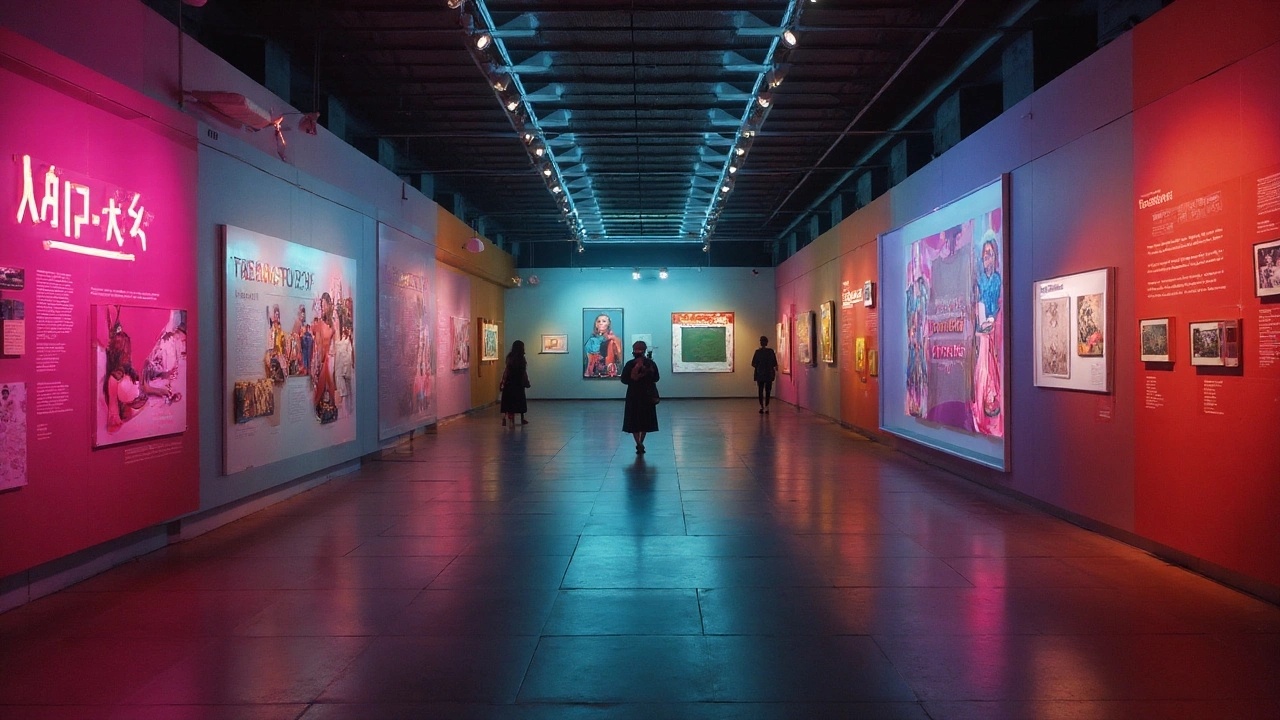Examples of Contemporary Art You Can See Right Now
Ever walked into a gallery and felt confused by a splash of colour or a glitchy video? You’re not alone. Contemporary art is full of surprises, but the good news is you can learn to read it fast. Below are some everyday examples that show what’s happening in the art world today.
Abstract Paintings That Talk Without Words
Abstract art is probably the first thing people think of when they hear "contemporary." It’s not about realistic scenes; it’s about mood, colour, and gesture. Look for works that use bold brushstrokes, layered glazes, or unexpected textures. Artists like Mark Bradford or the newer wave of AI‑enhanced painters use abstraction to comment on social issues, climate change, or personal memory. A quick tip: notice the dominant colour palette – warm reds often signal urgency, while cool blues can suggest calm or contemplation.
Digital & AI Creations That Blur the Real‑World Line
Digital art isn’t just cool Instagram filters. It’s a full‑blown movement where artists use code, 3D modelling, and even generative AI to make pieces that live online or in VR galleries. Projects like "Glitch City" or AI‑generated portraits challenge what we call "original" art. When you see a work that updates itself based on viewer interaction, you’re looking at a living example of contemporary practice. To spot one, check if the piece reacts to sound, movement, or the time of day.
Street art and installation pieces also count as contemporary examples. Think of a massive mural that appears overnight or a sculpture made from recycled trash placed in a public park. These works bring art out of museums and into daily life, making the conversation louder and more accessible.
So, how do you start recognizing these examples on your own? First, pay attention to the context – where the piece is shown and who funded it. Second, ask what the artist wants you to feel or think. Finally, don’t be afraid to trust your gut; contemporary art often aims to spark a gut reaction, whether it’s curiosity, discomfort, or excitement.
Next time you stroll through a gallery, a city square, or even scroll through an online exhibit, try to name the style you’re seeing. Is it a bold abstract canvas, a glitchy digital loop, or a reclaimed‑material sculpture? Naming it helps you understand why it matters and how it fits into the larger story of contemporary art today.

17 Sep 2025
A plain-English guide to the principles of contemporary art. Learn the core ideas, how to analyze any work, apply them to your own projects, and avoid pitfalls.
Continue reading...
